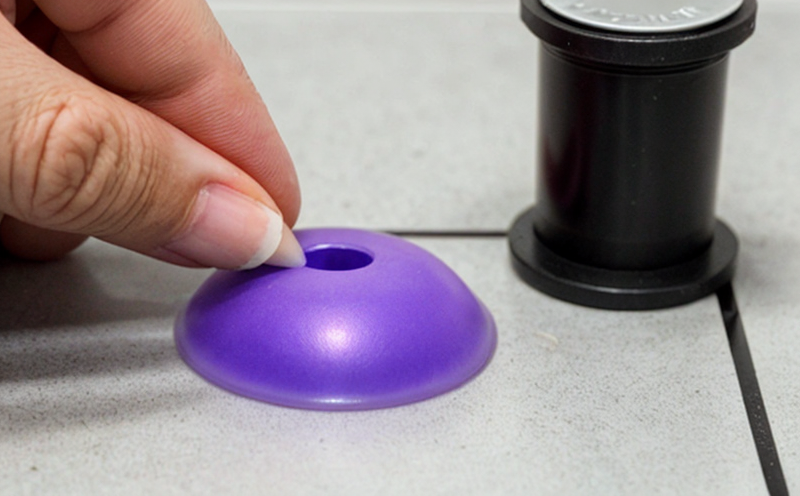JIS R1629 Fine Ceramics Specific Surface Area by Gas Adsorption
The determination of specific surface area using JIS R1629 involves the measurement of gas adsorption onto fine ceramics. This method is particularly relevant for materials like alumina, zirconia, and other oxide-based ceramics which are critical in various sectors including aerospace, electronics, and catalysis.
Specific surface area (SSA) refers to the total surface area available per unit mass or volume of a material. For fine ceramics, this parameter is crucial as it influences properties such as reactivity, porosity, and stability under high-temperature conditions. The JIS R1629 method utilizes nitrogen adsorption at 77 K, which provides accurate measurement of SSA down to low values.
The process involves the following steps:
- Preparation of the ceramic sample by grinding it into a fine powder with a particle size distribution suitable for the analysis.
- Weighing and accurately measuring the amount of the sample used in the adsorption experiment.
- Roughening the sample surface to enhance the adsorption process.
- Adsorbing nitrogen gas onto the sample at 77 K under controlled pressure conditions.
The data obtained from this method is then analyzed using BET (Brunauer-Emmett-Teller) theory, which provides a precise calculation of the specific surface area. This technique allows for the quantification of even very small pores within the ceramic material, giving insights into its microstructure and potential applications.
For instance, in aerospace applications, materials with high specific surface areas can offer enhanced catalytic performance or improved heat dissipation properties. In electronics, fine ceramics are used to create capacitors and other components where high SSA is beneficial for increased capacitance and reduced size.
| Sample Preparation | Adsorption Process | Data Analysis |
|---|---|---|
| - Grind sample to 10-53 microns - Ensure uniformity of particle size |
- Adsorb nitrogen at -196°C under controlled pressure - Measure the amount of gas adsorbed as a function of pressure |
- Apply BET theory to calculate SSA - Interpret results in relation to material properties |
The JIS R1629 method is widely recognized for its accuracy and reliability, making it an essential tool for quality managers and compliance officers ensuring product consistency. For R&D engineers, this service provides critical data on the microstructure of fine ceramics, which can guide material development efforts.
Additionally, this technique supports procurement activities by offering robust validation of supplier materials against industry standards, thus enhancing supply chain reliability.
Why It Matters
The measurement of specific surface area using JIS R1629 is vital for several reasons. In the aerospace sector, fine ceramics with high SSA can enhance catalytic performance and improve heat dissipation, contributing to more efficient engines and components. For electronics manufacturers, materials like alumina used in capacitors benefit from high SSA leading to higher capacitance and smaller component sizes.
The accuracy of this method is crucial for compliance officers who need to ensure that the products meet stringent industry standards. By using JIS R1629, they can verify that the materials have the desired properties, which is essential for maintaining product quality and safety.
For procurement teams, this service ensures that suppliers deliver materials consistent with specifications. This reliability reduces the risk of supply chain disruptions and enhances overall operational efficiency.
Scope and Methodology
| Scope | Methodology |
|---|---|
| - Determination of specific surface area for fine ceramics - Suitable for materials such as alumina, zirconia, and other oxides |
- Use nitrogen adsorption at 77 K - Apply BET theory to calculate SSA |
The scope is limited to the determination of specific surface area using JIS R1629 for fine ceramics. The methodology involves several key steps including sample preparation, adsorption process, and data analysis.
Sample preparation is critical as it affects the accuracy of the results. The ceramic samples are ground into a fine powder with particle sizes suitable for adsorption studies. This ensures that all particles contribute uniformly to the overall surface area measurement. After grinding, the samples undergo roughening to enhance the adsorption process, which helps in capturing more accurate data.
The adsorption process is carried out at 77 K using nitrogen gas under controlled pressure conditions. The amount of nitrogen adsorbed as a function of pressure is measured and used for further analysis. This step ensures that all pores within the sample are fully accessed during the measurement, providing comprehensive surface area data.
Data analysis involves applying BET theory to interpret the adsorption isotherm data. This theoretical approach provides precise calculations of specific surface area based on the amount of nitrogen adsorbed at different pressures. The results from this method give valuable insights into the microstructure and potential applications of fine ceramics.
Environmental and Sustainability Contributions
- Promotes efficient use of resources by optimizing material properties
- Reduces waste through accurate measurement, ensuring only necessary amounts are used in production processes
- Supports recycling efforts by providing reliable data for reprocessing materials
The JIS R1629 method contributes positively to environmental sustainability by promoting efficient resource use. By accurately determining the specific surface area of fine ceramics, this service ensures that only the necessary amounts of material are used in production processes. This reduction in waste is crucial for minimizing environmental impact and supporting recycling efforts.
Accurate measurement also supports reprocessing initiatives, which can extend the lifecycle of materials and reduce the need for new raw materials. By providing reliable data on material properties, this service enables more sustainable manufacturing practices, contributing to a greener future.





